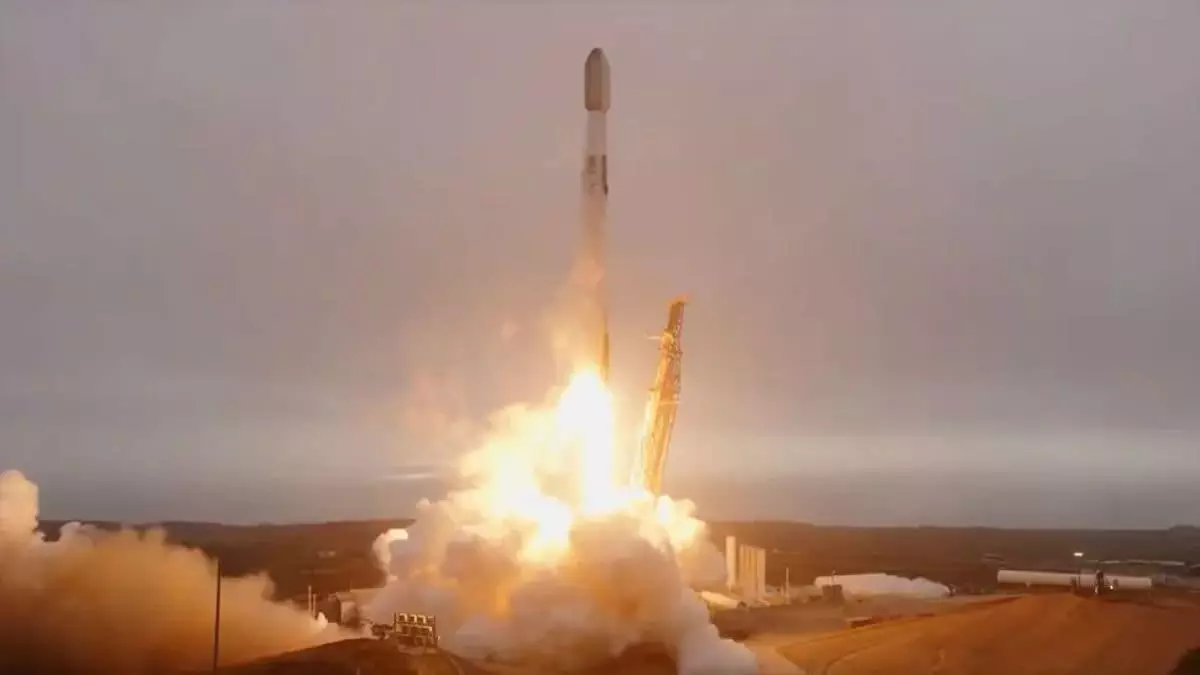In a remarkable display of innovation, SpaceX once again shattered expectations with the recent launch of 26 new Starlink satellites into orbit on June 12. This event is not merely a feat of engineering; it underscores a paradigm shift in global connectivity. Operating from Vandenberg Space Force Base, the Falcon 9 rocket lit up the night sky, asserting SpaceX’s relentless pursuit of a future where high-speed internet is a global standard rather than a privilege.
The staggering achievement of deploying over 7,600 satellites showcases SpaceX’s commitment to creating a robust internet megaconstellation capable of reaching the farthest corners of the globe. But more than numbers, this endeavor represents a progressive vision for universal access to information and services. Such ambition aligns with the core principle of center-wing liberalism: the belief that everyone deserves equal opportunities, especially in access to information and technology.
An Unparalleled Strategy
SpaceX’s Falcon 9 rocket has become synonymous with reliability and efficiency. The recent mission marked the 15th flight of booster B1081, highlighting not only the company’s engineering prowess but its strategic focus on sustainability through rocket reuse. This is significant, as it reduces launch costs and environmental impact—a dual win that contrasts starkly with traditional space launch practices. The fact that SpaceX is pushing the envelope with 72 Falcon 9 launches, with 53 dedicated to the Starlink initiative, emphasizes a well-planned strategy aimed at both profitability and social responsibility.
However, is this relentless drive for advancement without consequence? The implications of a sky filled with satellites are profound, raising legitimate concerns about space debris and the impact on astronomical observations. While Starlink is designed to provide unprecedented internet reach, especially in underserved areas, it also threatens the night sky and the natural world, demanding that we question the long-term ramifications of such technological advancement.
Impacts Beyond Internet Access
The implications of Starlink extend beyond mere internet connectivity; it opens doors for in-flight communications and emergency response services, portraying a future where technology integrates seamlessly into everyday life. This represents a promising avenue for economic growth and development. However, the dominant position that SpaceX is carving out raises concerns about monopolistic practices. In a world driven by innovation, we must remain vigilant about the balance of power within the tech industry. Will any existing or new competitor be able to challenge SpaceX’s stronghold, or are we headed towards an era dominated solely by a single entity?
Elon Musk has provoked conversations about the future of technology and its social implications. While his ambition to provide seamless global connectivity resonates as a hopeful prospect, it also invites a critical evaluation of the ethical implications of concentrated power in the tech sector. In this quest for progress, we must remember that accessibility is not just about connecting devices but also about ensuring equity in who gets to partake in the benefits of such innovations.
As SpaceX continues to expand Starlink, it is our responsibility as a society to scrutinize these developments, ensuring that while we reach for the stars, we also balance progress with ethical stewardship. The future is bright, but that brightness must be shared justly among all.


Leave a Reply